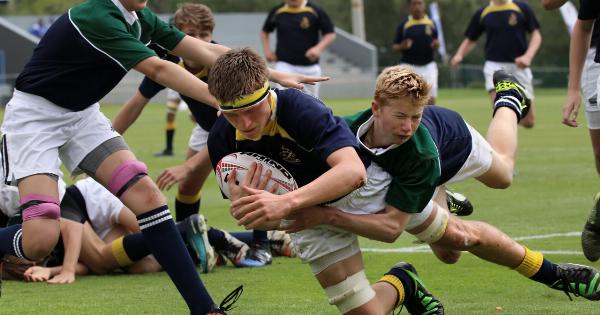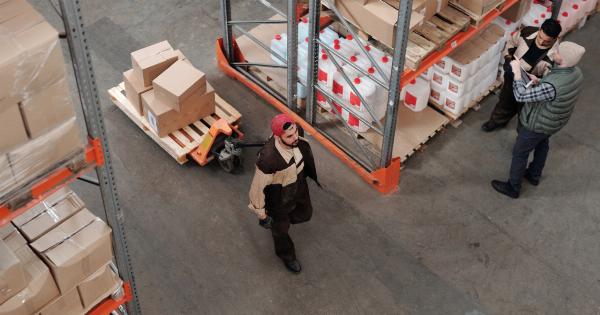Groin injuries can be painful and can significantly impact a person’s mobility. The groin area, located between the lower abdomen and the thigh, is comprised of muscles, tendons, and ligaments that work together to support movement.
However, various factors can lead to groin injuries, ranging from sports-related activities to overuse or strain. In this article, we will delve into the different types of groin injuries, their causes, and how to prevent them.
Types of Groin Injuries
1. Groin Strain:.
2. Groin Hernia:.
3. Adductor Tendinopathy:.
4. Sports Hernia:.
Groin Strain
Groin strain is one of the most common groin injuries, often affecting athletes involved in sports that require sudden changes in direction or intense kicking.
It occurs when the muscles in the inner thigh, known as adductor muscles, are overstretched, torn, or pulled. Symptoms of a groin strain include pain, tenderness, and muscle weakness in the groin area.
Groin Hernia
A groin hernia refers to the bulging of an organ or tissue through a weak spot in the muscles of the groin area. Hernias can develop when there is increased pressure on the abdominal wall, causing a portion of tissues to protrude.
This can result in discomfort, pain, and a visible bulge in the groin.
Adductor Tendinopathy
Adductor tendinopathy is a condition characterized by the degeneration or inflammation of the tendons in the groin area.
It often occurs due to repetitive strain or overuse, commonly seen in athletes involved in activities such as running, jumping, or kicking. Symptoms may include pain, stiffness, and difficulty moving the leg.
Sports Hernia
A sports hernia, also known as athletic pubalgia, is a condition where there is excessive stress on the groin area, resulting in tissue damage. Unlike a traditional hernia, a sports hernia does not involve a visible bulge.
Instead, it causes chronic groin pain, particularly during physical activity. This injury is commonly seen in athletes participating in sports that involve twisting, turning, or sudden changes in direction.
Causes of Groin Injuries
1. Overuse or Repetitive Movements:.
2. Sudden Movements:.
3. Poor Conditioning:.
4. Inadequate Warm-up:.
Overuse or Repetitive Movements
Groin injuries can occur when there is an overload on the muscles, tendons, and ligaments in the groin area due to repetitive movements.
Athletes involved in sports such as soccer, hockey, and rugby are prone to overuse injuries as they often engage in repetitive kicking or twisting motions that strain the groin muscles.
Sudden Movements
Sharp, sudden movements can also contribute to groin injuries. Actions like rapid changes in direction, pivoting, or landing awkwardly can strain or tear the muscles in the inner thigh.
These sudden movements often occur in sports like basketball, tennis, or martial arts.
Poor Conditioning
Inadequate conditioning or insufficient strength in the groin area can increase the risk of sustaining a groin injury.
If the muscles are weak or imbalanced, they may not be able to withstand the demands of physical activity, leading to potential strains or tears. Regular strength and conditioning exercises targeting the groin muscles can help prevent such injuries.
Inadequate Warm-up
A proper warm-up routine is crucial before any physical activity, as it prepares the muscles for the movements and reduces the risk of injury.
Failing to warm up adequately can leave the groin muscles unprepared for sudden or intense movements, making them more susceptible to strains or tears.
Prevention and Treatment
1. Proper Warm-up and Stretching:.
2. Gradual Progression:.
3. Strengthening Exercises:.
4. Rest and Recovery:.
5. Medical Intervention and Rehabilitation:.
Proper Warm-up and Stretching
Before engaging in any sports or physical activity, it is essential to perform a thorough warm-up routine. This should include cardiovascular exercises to increase blood flow, followed by dynamic stretches that target the groin area.
Gently stretching the muscles can help improve flexibility and minimize the risk of groin injuries.
Gradual Progression
When starting a new sport or exercise program, it is crucial to progress gradually. Sudden, intense activities without allowing the body time to adapt can lead to strain or injury.
Gradually increasing the intensity, duration, and frequency of workouts can help prevent overuse injuries and allow the groin muscles to adapt to the demands placed upon them.
Strengthening Exercises
Regular strength and conditioning exercises are essential for preventing groin injuries. Strengthening exercises targeting the groin muscles, such as adductor squeezes or side lunges, can help improve their capacity to withstand sudden movements.
Additionally, exercises that focus on enhancing core stability and overall lower body strength can also contribute to injury prevention.
Rest and Recovery
Allowing the body sufficient time for rest and recovery is crucial in preventing groin injuries. Adequate rest between workouts and proper sleep can promote muscle repair and reduce the risk of overuse injuries.
Additionally, incorporating recovery techniques such as foam rolling, stretching, and massages can help alleviate muscle tension and aid in the healing process.
Medical Intervention and Rehabilitation
If a groin injury occurs, seeking medical intervention is important to obtain an accurate diagnosis and appropriate treatment plan. Treatment may involve rest, physical therapy, or, in severe cases, surgery.
Following a rehabilitation program prescribed by a medical professional is crucial for a safe and effective recovery.
Conclusion
Groin injuries are common among athletes and individuals who engage in physically demanding activities. Understanding the different types of groin injuries, their causes, and methods of prevention can help reduce the risk of sustaining such injuries.
By implementing proper warm-up routines, gradually progressing physical activities, and engaging in strength and conditioning exercises, individuals can mitigate the likelihood of groin injuries and maintain their overall well-being.






























